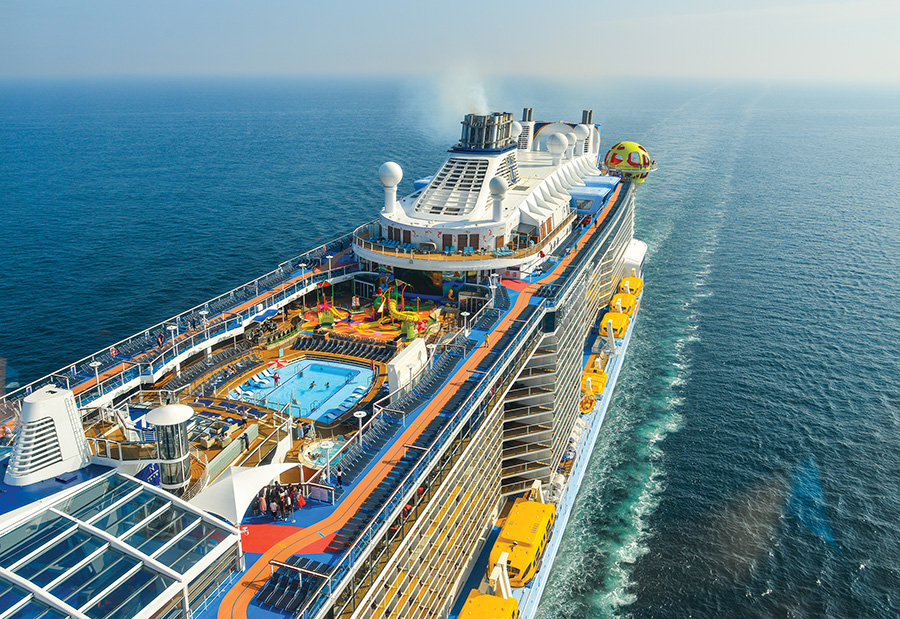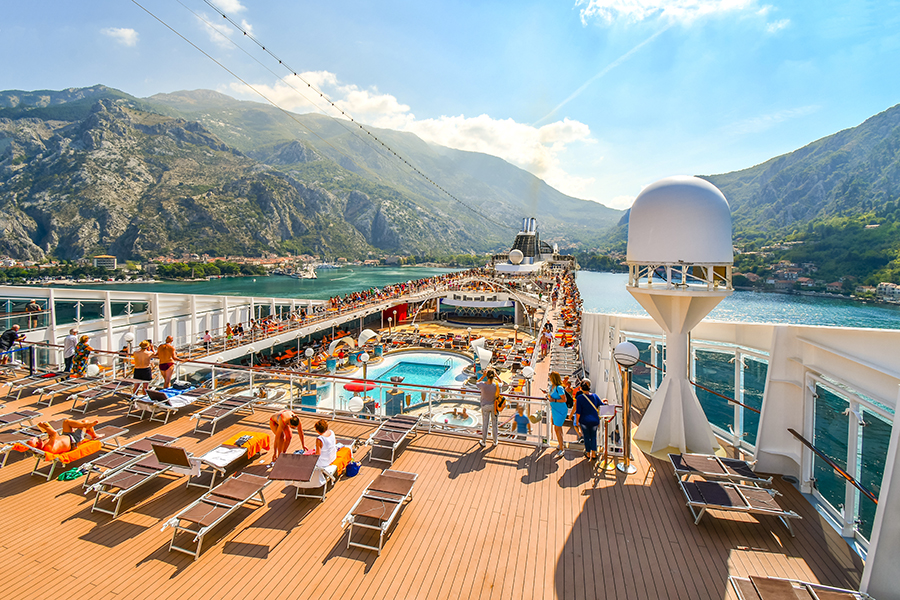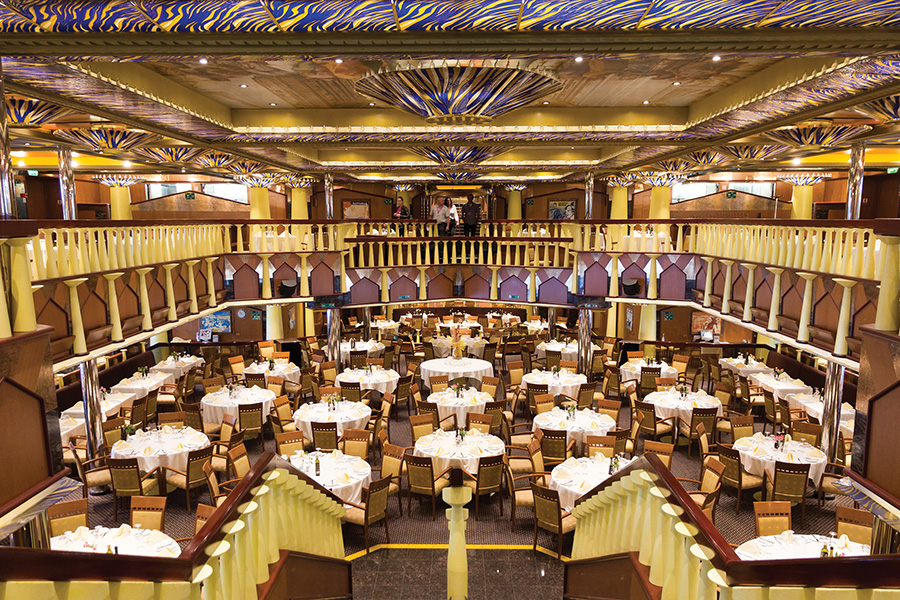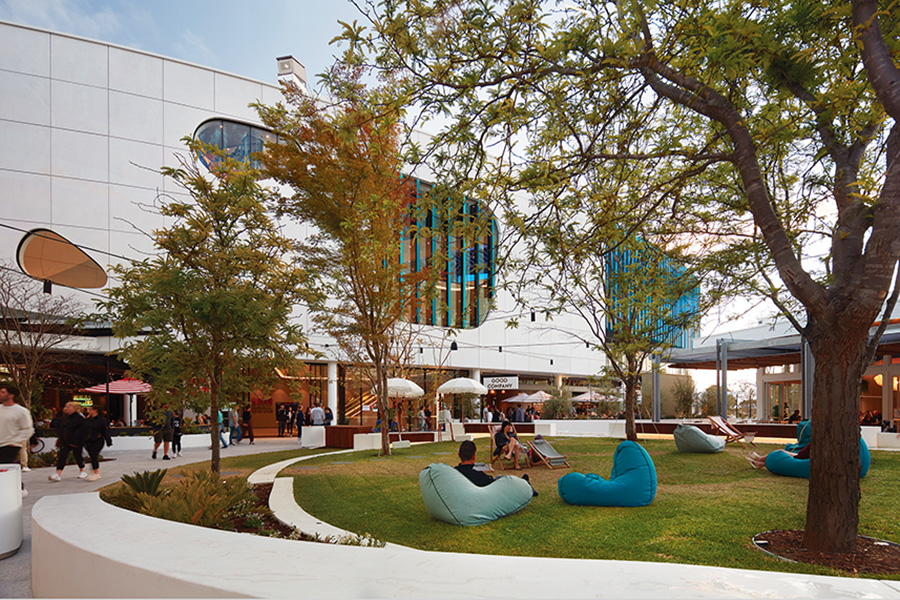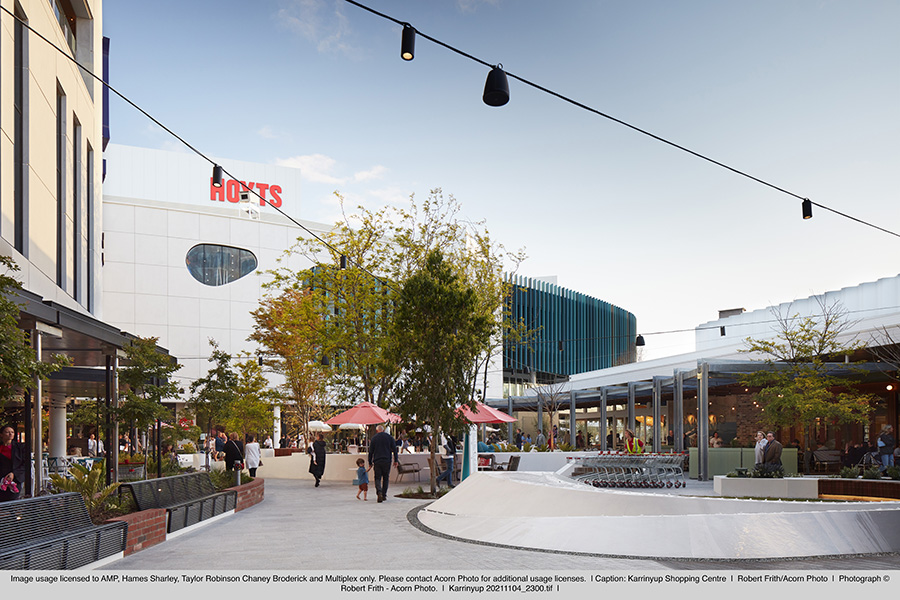What can shopping centre developers and managers learn from cruise ship operators? Lots, according to Hames Sharley Retail & Town Centres Thought Leadership Group…
Australians have long enjoyed a love affair with cruising. From P&O’s Fairstar The Funship in the 1980s to the floating cities on the sea today, the global cruising industry is worth a whopping $7.25 billion, bouncing back from COVID-19 devastation and growing steadily.
On board, passengers happily exchange their space, time and money for a dizzying array of activities and experiences that now include digital sports complexes with ice-skating rinks, miniature golf courses, casinos, restaurants, planetariums, jumbo LED movie screens, hybrid rollercoaster/waterslides and ‘spraygrounds’ of snaking waterslides around the ship – and more.
Given our obsession with the high seas, what can we learn from these successful microcosms of economy and culture? If cruise ships are intense, floating laboratories, perhaps we can apply the same thinking to real-world CBD retail environments.
Creating a sense of joy
Firstly, a disclaimer that a cruise ship is not the real world with its costly entry point and captive market. But the lessons are interesting and valid. For one, all cruise ships capitalise on creating an overwhelmingly ‘happy’ aesthetic, similar to that other ‘happiest place on earth’ – Disneyland. Each experience, touchpoint and service is meticulously curated to feel fun, joyful and relaxing, where people cruise for pleasure, immediacy and the community of the experience despite the reality that they’re contained on a ship with little choice about how and where they spend their time and money.
This simple psychology of injecting joy and pleasure into cruising is fundamental when designing for our CBD environments. People who are happy, relaxed and comfortable linger longer and, therefore, are inclined to spend more money in the spirit of reciprocity and generosity. Cruise ship operators oblige by curating opportunities for passengers to buy add-on experiences, recognising that passengers tend to spend more when relaxed.
In retail, the key is generosity and reciprocity too. If customers walk into a space and feel they are getting something for free, such as beautifully appointed bathrooms or lush landscaping, they are incentivised to spend longer on site and spend more. For example, the Commercial Bay shopping centre on the waterfront of Auckland’s Waitemat Harbour introduced shoppers to exclusive high-end retailers, to lure shoppers back to the CBD.
- Cruise ships capitalise on creating an overwhelmingly happy aesthetic
- Cruise ships capitalise on creating an overwhelmingly happy aesthetic
Competing through experience
On a cruise ship, passengers have paid a one-off fee to board, so there’s not the same sense of ‘passing trade’ that CBD retailers rely on for extra revenue. But operators tailor activities to suit different markets, for example, eco-travel, Instagram-travel or sustainable travel with opportunities to buy extra experiences, such as drinks packages, onboard dining options or onboard artist collaborations, offering more than exchanging money for goods.
Similarly, CBD retailers that can bring diversity to the customer experience can also build brand loyalty and profit. For example, we’ve already seen this with electric vehicle (EV) stores within shopping centres or in pop-up formats. In time, we may see retail opportunities that sit outside the box, such as the option to buy a car or other goods on board a cruise, which are typically reserved for bricks-and-mortar stores.
For example, Karrinyup Shopping Centre introduced Perth to best-in-class entertainment following its three-year redevelopment. As part of The West Deck entertainment precinct, the centre now has an Australian-first HOYTS D-BOX cinema, alongside premier dining moments and a coastal setting that helps it become a lifestyle destination.
- Karrinyup Shopping Centre, WA
- Karrinyup Shopping Centre, WA
Authentic experience tied to place
The success of a cruise is also about celebrating place with curated experiences that provide passengers with a deeper connection to either the ship itself, or the destination. For example, passengers can opt for a tour of the ship’s inner workings, a behind-the-scenes opportunity to see the underbelly of its operations, or ‘captain’s table’ activities to share a meal with the captain of the ship in their private quarters. Or, passengers can buy ‘once-in-a-lifetime’ activities associated with the port their ship is visiting, such as insider tours with locals, where the authenticity of a place is showcased to provide a unique insight into a city or region.
Similarly, CBD retailers can lean into the importance of place, to provide a unique experience shoppers cannot see or buy anywhere else. At the bridges between Melbourne Central and the Emporium over Lonsdale Street, passersby can watch an external wall come to life with a mural advertisement handpainted by an artist over several days. Not only does this celebrate Melbourne City’s street art culture and the craft of art, it also provides shoppers with an experience – for free – that encourages longer linger time and creates a positive association outside its core function.
Another example is Marrickville Metro in Sydney, which embraces the area’s strong local and family culture with neighbourhood-friendly activations including regular Metro Markets on Smidmore St, a Car Boot Sleep Out on the rooftop, and DJ Workshops and Silent Disco party for kids.
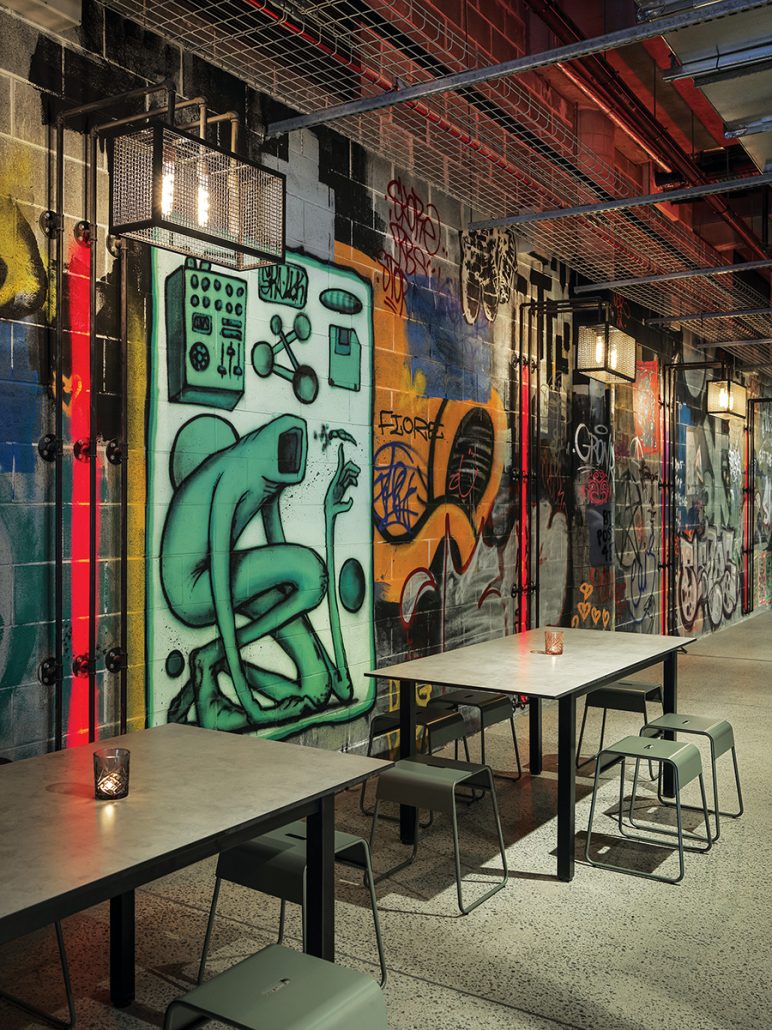
Marrickville Metro Shopping Centre, NSW
The need for reinvention
Finally, modern cruise ships are designed as a 24-hour economy. With every sport, food, arts, leisure and entertainment whim catered for day and night, passengers have grown accustomed to options that enable them to participate around the clock. As a result, cruise ship operators must regularly evolve their service offerings to retain market share, harnessing the importance of creating entertainment and employment opportunities intrinsically linked to the cruise ship’s cultural identity of fun times at all hours.
Cities around the world are currently experiencing a similar need for reinvention as they redefine what it means to be awake after dark. Many are now establishing Night Time Economies (NTE), comprising regulated, planned and structured offers for an eco-system of people who use the city between 6pm and 6am and who don’t simply stop when day turns into evening. Originally purely an economic or governance mechanism, NTEs are emerging as a holistic approach to space and time, so that CBDs are positioned as the epicentre of a location’s identity and its spatial centre.
As our roads get busier, our housing denser and our CBD retail environments more competitive, a city’s 24-hour economy is an evolving space, fast becoming more than just an economic tool.
It’s many things, but particularly cultural – a celebration of a location’s DNA, history, potential future and identity, and a way of securing commercial viability.
In NSW, the Office of the 24-Hour Economy Commissioner is building vibrant nighttime economies and experiences across the city and state, catering to the demands of a diverse audience, and becoming generators of employment on a large scale.
The opportunity for Australia’s retail industry is a considered holistic strategy activated by significant, sensitive design and carefully considered experiences, so an intricate balance can be struck between cultural respect and the commodification of space and experience. And while we all may not experience the buzz on board a cruise ship, there’s no denying their pull power capturing the hearts – and wallets – of millions of Australians, with valuable lessons we can all learn to build successful and sustainable retail industries too.
This article by Hames Sharley Retail & Town Centres Thought Leadership Group is published in the latest edition of SCN magazine.


